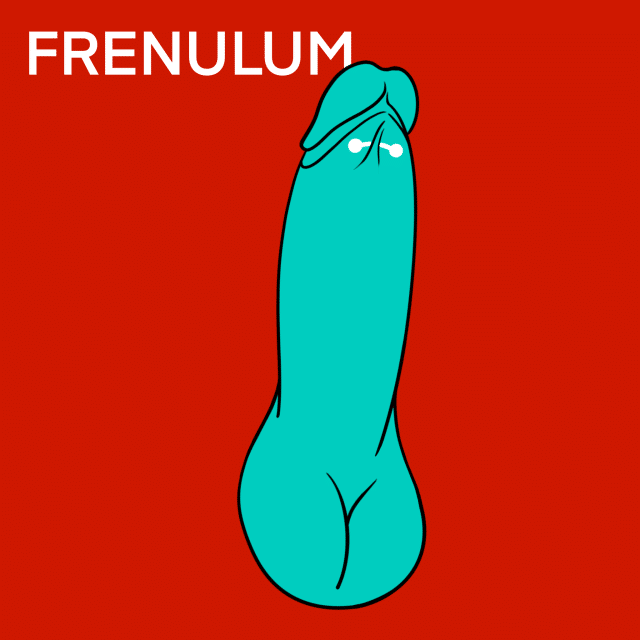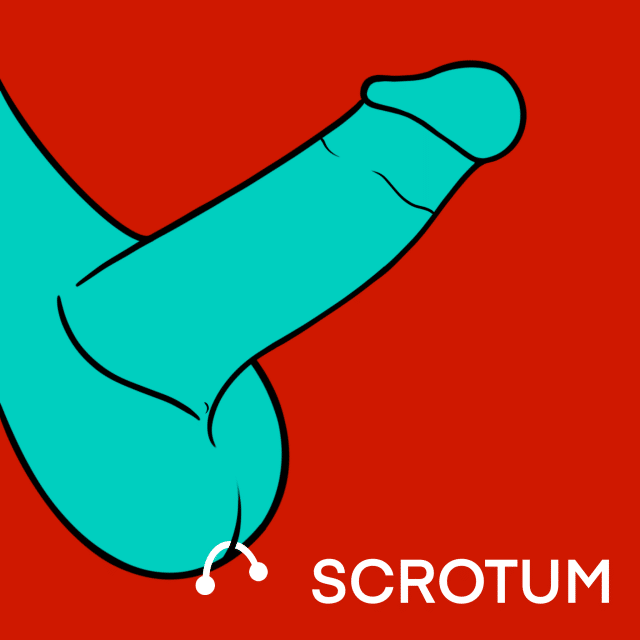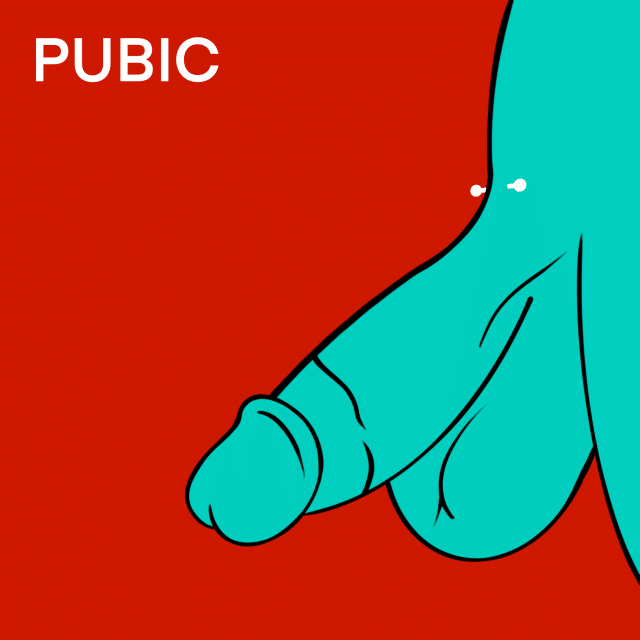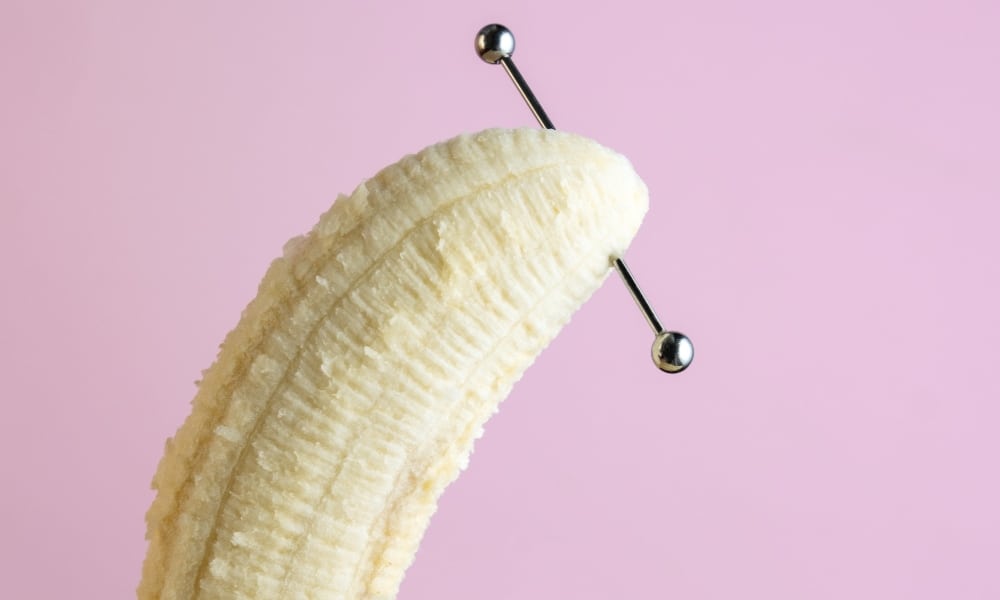Various cultures worldwide have been practicing penis piercing for thousands of years for different reasons. While many associate it with the modern Western world and body modification subculture, its history is far more complex and deep.
Ancient Origins
Ancient Egyptians believed that piercing the penis increased fertility and sexual pleasure. This practice also gained popularity in ancient Rome and was a sign of wealth and status. Certain Native American cultures included penis piercings as a rite of passage into manhood and held elaborate ceremonies for it. Some African cultures recognized it as a symbol of strength and virility, and it was often given as a gift to brides on wedding days.
Related | Double Trouble: Must-Knows Before Getting A Double Nose Piercing
In the late 20th century, the body modification movement popularized penis piercings in the modern Western world. Many see it as a form of self-expression and a way to enhance sexual pleasure. There are several types of penis piercings, each of which comes with potential risks and benefits.
The Most Famous Penis Piercing
The Prince Albert piercing is the most common type of penis piercing. It is named after Queen Victoria’s husband, Prince Albert, who is rumored to have had one. It is done through the urethra and exits through the bottom of the penis, near the base. This piercing can enhance sexual pleasure for both the person being pierced and their partner, as it can stimulate the sensitive nerve endings in the urethra.Other common types of penis piercings are the frenulum piercing, which is done through the skin on the underside of the penis; the scrotum piercing, which is done through the scrotum or testicles; and the pubic piercing, which is done through the pubic mound. All these piercings can also enhance sexual pleasure and are often combined with other piercings for a more visually striking effect.
Are Penis Piercings Risky?
While penis piercings can be a source of pleasure and self-expression, they also come with risks. The most common risks associated with penis piercings are infection and damage to the tissue. It is essential to thoroughly research and choose a reputable piercing studio and follow all aftercare instructions to minimize these risks. It is also important to know that genital piercings may be banned or restricted in certain countries or workplaces. Hence, one must familiarize oneself with the laws and regulations in one’s area before getting a piercing.
Overall, the history of penis piercings is rich and varied, with roots in ancient cultures and modern self-expression. While they can be a source of pleasure and self-expression, it is crucial to be aware of the risks and take proper precautions when getting a piercing.
Types of Penis Piercings
There are many types of penis piercings, each with risks and potential benefits. Here are some of the most common types of penis piercings. 
Prince Albert
Prince Albert piercing is the most popular and well-known type of piercing. It is named after Queen Victoria’s husband, Prince Albert, who is rumored to have had one. The piercing is done through the urethra and exits through the bottom of the penis, near the base. It is said to enhance sexual pleasure for the person being pierced and their partner. This is because it can stimulate the sensitive nerve endings in the urethra.
Frenulum Piercing
This piercing is done through the skin on the underside of the penis. This is where the frenulum (a small fold of skin) connects the glans (head) of the penis to the shaft. This piercing enhances pleasure for the person being pierced during sexual activity and can be done vertically or horizontally.
Scrotum Piercing
As the name suggests, this piercing is done through the scrotum or testicles. There are several different types of scrotum piercings. These include the Hafada, which is a single piercing on one side of the scrotum; the Guiche, which is a piercing through the perineum (the area between the scrotum and anus); and the Scrotal Ladder, which is a series of piercings down the length of the scrotum. Scrotum piercings are said to enhance sexual pleasure for the person being pierced. They can also be more painful and take longer to heal.
Pubic Piercing
This piercing is done through the pubic mound, the fleshy area above the base of the penis. It is said to enhance sexual pleasure for the person being pierced. It can be done as a single piercing or in combination with other piercings.
Related | Cali Students Defy Gender Norms to Protest Dress Code
How to Care for Penis Piercings
Proper care is important to ensure the safe and successful healing of any piercing, including a penis piercing. Here are some tips for caring for a penis piercing.
Follow the Aftercare Instructions
Your piercer should give you specific aftercare instructions, which you should follow carefully for optimal healing.
Keep the Piercing Clean
It is crucial to keep the piercing clean to prevent infection. Gently wash the area with mild soap and warm water at least twice daily. Avoid using harsh soaps or chemicals, as they can irritate the skin.
Avoid Sexual Activity
Avoiding sexual activity, including masturbation, until the piercing has fully healed. This can take several weeks to a few months. It will depend on the type of piercing and the individual’s anatomy and healing rate.
Avoid Swimming and Hot Tubs
It is important to avoid swimming and hot tubs until the piercing has fully healed. The bacteria in these environments can cause infection.
Avoid Tight Clothing
Tight clothing can irritate the piercing and delay healing. It is important to wear loose-fitting clothing while the piercing is healing.
Check the Jewelry Regularly
It is important to check the jewelry regularly to ensure that it is secure and not causing irritation. Contact your piercer or a healthcare provider for advice if you notice any redness, swelling, or discharge.
Remove Only When Necessary
If you need to remove the jewelry, such as for a medical procedure, be sure to replace it with a sterile barbell as soon as possible to avoid closing the piercing.
Following these tips and being careful with the piercing can help ensure a safe and successful healing process. It is always important to seek the advice of a reputable piercer or a healthcare provider if you have any concerns about your piercing.
What Types of Jewelry Are Used for Penis Piercings?
People use a variety of different types of jewelry for their penis piercings. The type will depend on the specific type of piercing and the individual’s preference. Some common types of jewelry for penis piercings include:
- Barbells: Barbells are a common choice for penis piercings because they are easy to clean, and you can remove them easily. They consist of a straight bar with a ball on each end, which a piercer or the wearer inserts through the piercing and tightened.
- Captive bead rings: Captive bead rings, also known as CBRs, are another common choice for penis piercings. They consist of a circular ring with a bead held in place by tension. They can be more challenging to remove than barbells and may be more prone to snagging on clothing.
- Curved barbells: Curved barbells have a curve to fit the shape of the body. Many people use these barbells for frenulum piercings and other piercings requiring a curved piece of jewelry.
- Circular barbells: Circular barbells resemble barbells but have a circular shape. Many people use them for scrotum piercings and other types requiring a circular piece of jewelry.
- Hoops: Hoops, also known as rings, are popular for penis piercings. They come in various sizes and styles and can be more difficult to clean than barbells or captive bead rings.
Choosing jewelry made of high-quality materials, such as surgical stainless steel, titanium, or gold, is vital. This will minimize the risk of irritation or infection. It is also essential to choose the right size and style of jewelry for the specific type of piercing to ensure a comfortable fit and successful healing. Consult a reputable piercer to determine the best kind of jewelry for your piercing.
Related | What is the Average Penis Size?
What Types Of Materials are Used in Penis Piercing Jewelry?
Different materials can serve as jewelry for penis piercings, including:
- Surgical stainless steel: This is a popular choice for piercing jewelry because it is strong, durable, and resistant to corrosion. It is also relatively inexpensive and widely available.
- Titanium: This is another popular choice for piercing jewelry because it is strong, lightweight, and hypoallergenic. It is more expensive than surgical stainless steel but many people with sensitive sink or allergies preferred it to other materials.
- Gold: Gold is a softer metal than stainless steel or titanium and is, therefore, not as strong. However, it is non-irritating and hypoallergenic, making it a good choice for those with sensitive skin. Gold is more expensive than other materials and is less widely available.
- Silver: Silver is a softer metal than stainless steel or titanium and is, therefore, not as strong. It is also prone to tarnishing and may cause allergic reactions in some people. Silver is generally less expensive than gold but is not as widely available.
Plastic: Plastic is a lightweight and inexpensive material that people with metal allergies sometimes use. However, it is not as strong or durable as metal and is more prone to breaking or falling out.
It’s important to choose jewelry made of high-quality materials to minimize the risk of irritation or infection. Make sure to choose the right size and style of jewelry for the specific type of piercing to ensure a comfortable fit and successful healing. It’s always a good idea to consult a reputable piercer to determine the best material for your piercing.
How Much Do Penis Piercings Cost?
The cost of a penis piercing can vary depending on some factors, including the specific type of piercing, the location of the piercing studio, and the experience and reputation of the piercer. Some common types of penis piercings and their approximate costs are:
-
- Prince Albert piercing: $40-$80
- Frenulum piercing: $40-$80
- Scrotum piercing: $50-$100
- Pubic piercing: $40-$80
- Dydoe piercing: $50-$100
- Apadravya piercing: $50-$100
- Ampallang piercing: $50-$100
- Lorum piercing: $40-$80
- Foreskin piercing: $40-$80
- Penis Web piercing: $40-$80
- Penis Bridge piercing: $40-$80
- Penis Corset piercing: $100-$200
It’s important to note that these are rough estimates, and the actual cost may vary depending on the specific location and piercer. Shop around and compare prices before getting a piercing to find the best deal. It’s also important to consider the reputation and experience of the piercer, as a poorly performed piercing can result in complications and additional costs for treatment or removal.
Related | 4 Ways Running Affects Your Penis and Balls
What Are the Steps to Getting a Penis Piercing?
The process for getting a penis piercing will vary depending on the specific type of piercing and the preferences of the piercer. However, most people follow some general when getting a penis piercing:
- Consultation: The first step in getting a penis piercing is to consult with the piercer to discuss your goals and preferences. The piercer will assess your anatomy and determine the best type of piercing for you based on factors such as the size and shape of your penis, your pain tolerance, and overall health.
- Preparation: Before the piercing, the piercer will clean the area with an antiseptic solution to reduce the risk of infection. The piercer will also mark the area with a pen to indicate where they will place the piercing.
- Piercing: To do the piercing, piercers usually insert a hollow needle through the skin and then removed it, leaving a small opening. The piercer then inserts the jewelry through the opening and secured in place.
- Aftercare: After the piercing, the piercer will provide you with aftercare instructions, which you should follow carefully to ensure the best possible healing. These instructions may include cleaning the piercing with an antiseptic solution, avoiding sexual activity and rough handling, and avoiding tight clothing.
Choosing a reputable and experienced piercer who follows proper sterilization and piercing techniques to minimize the risk of infection and other complications is important. It is also important to communicate with your piercer about any concerns and ask questions throughout the process.
Do Penis Piercings Hurt?
The pain associated with getting a penis piercing will vary depending on the specific type of piercing, the individual’s pain tolerance, and their overall health. Some people report experiencing minimal discomfort during the piercing process, while others may find it more painful.
- The Prince Albert piercing: Many consider the Prince Albert piercing, which pierces through the urethra and exits through the bottom of the penis, less painful than other types of penis piercings.
- Frenulum piercings: Some piercing enthusiasts consider the Frenulum piercing, which pierces through the skin on the underside of the penis, less painful, too.
- Scrotum piercings: Most people consider the Scrotum piercing, which pierces through the scrotum or testicles, more painful and takes longer to heal than other types of penis piercings.
- Pubic piercings, which pierces through the pubic mound, can also be more painful depending on the individual’s pain tolerance and the location of the piercing.
Other types of penis piercings, such as the Dydoe, Apadravya, Ampallang, Lorum, Foreskin, Penis Web, Penis Bridge, and Penis Corset piercings, may also be more or less painful depending on the individual’s pain tolerance and the specific location of the piercing.
It is important to communicate with your piercer about your pain tolerance and any concerns you may have about the piercing process. The piercer can provide you with information about the expected level of discomfort and offer tips for managing pain during the piercing process. It is also important to follow the aftercare instructions provided by your piercer to minimize discomfort and promote healing.
What Are The Risks of Penis Piercings?
Like any body piercing, penis piercings carry a certain level of risk. Some potential risks associated with penis piercings include:
-
- Infection: One of the most common risks associated with penis piercings is infection. It is important to follow proper aftercare instructions, such as keeping the piercing clean and avoiding sexual activity until it has fully healed, to reduce the risk of infection.
- Bleeding: Some bleeding may occur during and after the piercing process. This is usually minimal and should stop within a few hours. If bleeding persists or is heavy, it is important to seek medical attention.
- Allergic reaction: Some people may develop an allergic reaction to the jewelry used in their piercing. Symptoms may include redness, itching, and swelling. If you experience an allergic reaction, it is important to remove the jewelry and seek medical attention.
- Scarring: While most piercings will leave a small scar, some people may develop more noticeable scarring, especially if infection occurs or they do not remove the jewelry properly.
- Damage to the urethra: In rare cases, a Prince Albert piercing may damage the urethra or cause other complications, such as scarring or swelling. It is important to choose a reputable piercer and to follow proper aftercare instructions to minimize the risk of these complications.
- Rejection: The body can reject some piercings. The tissue surrounding the piercing pushes the jewelry out. This can cause discomfort and require you to remove or replace the jewelry.
It is important to choose a reputable piercer and to follow proper aftercare instructions to minimize the risks associated with penis piercings. If you experience any unusual symptoms or complications after getting a piercing, it is important to seek medical attention.
How Long Do Penis Piercings Take to Heal?
The healing time for a penis piercing will vary depending on the specific type of piercing and the individual’s anatomy and healing rate. Some common types of penis piercings and their approximate healing times are:
-
- Prince Albert piercing: 4-12 weeks
- Frenulum piercing: 4-8 weeks
- Scrotum piercing: 4-12 weeks
- Pubic piercing: 4-12 weeks
- Dydoe piercing: 4-12 weeks
- Apadravya piercing: 4-12 weeks
- Ampallang piercing: 4-12 weeks
- Lorum piercing: 4-8 weeks
- Foreskin piercing: 4-12 weeks
- Penis Web piercing: 4-12 weeks
- Penis Bridge piercing: 4-12 weeks
- Penis Corset piercing: 6-12 weeks
It is important to follow the aftercare instructions provided by your piercer to ensure the best possible healing. This may include keeping the piercing clean, avoiding sexual activity and rough handling, and avoiding tight clothing. It is also important to avoid exposing the piercing to water, such as by swimming or soaking in a hot tub, until it has fully healed.
Related | Does Jelqing Make Your Penis Bigger?
If you experience any unusual symptoms or complications during the healing process, it is important to seek the advice of a healthcare provider or your piercer.
How to Care for Penis Piercings
Proper care is important to ensure the safe and successful healing of any piercing, including a penis piercing. Here are some tips for cleaning and caring for a penis piercing:
- Follow the aftercare instructions provided by your piercer: Your piercer should provide you with specific aftercare instructions, which you should follow carefully to ensure the best possible healing.
- Keep the piercing clean: It is important to keep the piercing clean to prevent infection. Gently wash the area with a mild soap and warm water at least twice daily. Avoid using harsh soaps or chemicals, as they can irritate the skin.
- Avoid sexual activity: Avoiding sexual activity, including masturbation, until the piercing has fully healed. This can take several weeks to a few months, depending on the type of piercing and the individual’s anatomy and healing rate.
- Avoid rough handling: Be gentle with the piercing and avoid rough handling, such as tugging or pulling on the jewelry. This can cause irritation and delay healing.
- Avoid swimming and hot tubs: It is important to avoid swimming and hot tubs until the piercing has fully healed, as the bacteria in these environments can cause infection.
- Avoid tight clothing: Tight clothing can irritate the piercing and delay healing, so it is important to wear loose-fitting clothing while the piercing is healing.
- Check the jewelry regularly: It is important to check the jewelry regularly to ensure that it is secure and not causing irritation. If you notice any redness, swelling, or discharge, contact your piercer or a healthcare provider for advice.
Questions to Ask Your Piercer
Before getting a penis piercing, it is important to ask your piercer a number of questions to ensure that you are comfortable with the process and to minimize the risk of complications. Here are some questions you may want to ask your piercer.
What type of piercing is best for me?
Consider asking your piercer about the different types of penis piercings available and which one they recommend based on your anatomy and goals.
How much experience do you have with this type of piercing?
You should choose an experienced and knowledgeable piercer for the specific piercing you’re considering.
Can you show me examples of your work?
Ask to see pictures of the piercer’s work to get an idea of their level of skill and experience.
What are the aftercare instructions?
Be sure to ask your piercer about the specific aftercare instructions for your piercing, including how to clean the piercing, how to care for the jewelry, and when to avoid sexual activity.
What are the potential risks and complications?
It is important to ask your piercer about the potential risks and complications associated with the specific type of piercing you are considering, including infection, bleeding, allergic reactions, and scarring.
How long will the piercing take to heal?
Ask your piercer about the expected healing time for the specific type of piercing you are considering.
How much will the piercing cost?
Ask your piercer about the cost of the piercing, including any additional fees for the jewelry or aftercare products.
It is important to choose a reputable and experienced piercer who is willing to answer your questions and address any concerns you may have about the piercing process. Be sure to communicate openly with your piercer and ask any questions you may have before getting a piercing.
Celebrities Who Have Penis Piercings
Celebrities often have body piercings, including penis piercings, but they don’t usually talk about it publicly. Many consider it a personal and private matter. Here are some examples of celebrities who allegedly have penis piercings:
- Johnny Depp, rumored to have a Prince Albert piercing which he has spoken about in interviews
- Axl Rose, lead singer of Guns N’ Roses, rumored to have a Prince Albert piercing and mentions it in interviews
- Mike Tyson, former boxer, rumored to have a Prince Albert piercing and has spoken about it in interviews
- Lenny Kravitz, singer and actor, rumored to have a Prince Albert piercing and has mentioned it in interviews
It’s important to note that these celebs have not confirmed their piercings and you should take it with a grain of salt. Genital piercings are a personal choice, and it is not appropriate to speculate about someone’s body modification choices without their consent.
Related | Why Did Humans Evolve Big Penises but Small Testicles?
We published this article for informational and educational purposes only. It is not a substitute for professional medical advice, diagnosis, or treatment. Always seek the advice of your healthcare provider with any questions you may have regarding a medical condition or before starting a new health regimen. Any actions taken based on the information provided in this article are at the reader’s own risk.
Penis Piercing FAQs
What is a penis piercing?
A penis piercing is a type of body piercing that is done on the genital area of a male.
What are the different types of penis piercings?
There are several types of penis piercings, including Prince Albert, Frenum, Apadravya, Dydoe, and Scrotum piercings.
Is getting a penis piercing painful?
The level of pain experienced during a penis piercing can vary from person to person, but most people report experiencing some level of discomfort.
How long does it take for a penis piercing to heal?
Typically, a penis piercing takes 4-12 weeks to fully heal. Are there any risks associated with getting a penis piercing? Like with any piercing or surgical procedure, there are some risks associated with getting a penis piercing, including infection, scarring, and allergic reactions.
Can a penis piercing affect sexual function or sensation?
Some people report increased sexual pleasure after getting a penis piercing, while others may experience decreased sensitivity or other complications.
Can a penis piercing be removed if I don’t like it?
Yes, a penis piercing can be removed if desired, but this can also be a painful and potentially complicated process.
How should I care for my penis piercing during the healing process?
It is important to keep the piercing clean and dry, avoid sexual activity, and follow any aftercare instructions provided by your piercer.
Can I still engage in sexual activity while my penis piercing is healing?
It is generally recommended to avoid sexual activity while your penis piercing is healing to minimize the risk of infection and other complications.
How much does a penis piercing cost?
The cost of a penis piercing can vary depending on factors such as the type of piercing, location of the piercing studio, and experience of the piercer.
